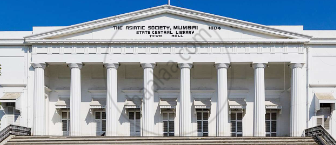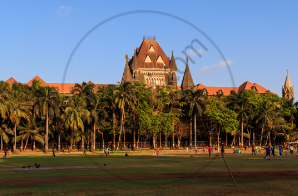Topics
Historiography : Development in the West
History : Applied History
Working of the Constitution
Historiography : Indian Tradition
The Electoral Process
Political Science : Working of the Indian Constitution
Applied History
Political Parties
History of Indian Arts
- What is ‘Art’?
- Indian Traditions of Visual Arts (Drik Kala): Painting
- Prehistoric Paintings
- Mural Paintings and Cave Painting
- Folk Styles of Paintings
- Classical Styles of Painting
- Miniature Paintings in Manuscripts
- Modern Indian Paintings
- Indian Traditions of Visual Arts (Drik Kala): Sculpture Art
- Indus Civilization Sculpture
- Folk Styles of Sculptural Art
- Classical Styles of Sculptural Art
- Indian Iconography
- Indian Traditions of Visual Arts (Drik Kala): Architecture and Sculpture
- Rock-cut Architecture
- Temple Architecture
- Indo-Islamic Architecture
- Indo-Gothic architecture
- Indian Traditions of Performing Arts
- Indian Theatre
- Indian Music
- Indian Dance
- Present Scenario of the Performing Arts
- Art, Applied Art, and Professional Opportunities
Social and Political Movements
- Movement
- Important Movements in India
- Tribal Movement
- Farmers Movement
- Worker's Movements
- Women’s Movement
- Environment Movements
- Consumer Movement
Mass Media and History
Challenges Faced by Indian Democracy
Entertainment and History
Sports and History
Tourism and History
Heritage Management
History - Imperialism
History - 20th Century Age of conflict
History - Emancipation of Asia and Africa
History - World after World War 2
Political Science
Geographical discoveries and colonization
- Concept for Geographical Discoveries and Colonization
Africa
- Imperialism - Africa
Asia: India, China, Japan
- Concept for Asia: India, China, Japan
Dictatorships in Europe, Second World War and world
- Concept on Dictatorships in Europe
- Concept for Second World War and World
First world war
- Concept on First World War
The League of Nations
- Concept for the League of Nations
Russian Revolution
- Concept for Russian Revolution
United Nations Organization
- Concept for United Nations Organization
Africa
- Emancipation of Africa
Asia
- Emancipation of Asia
Globalization
- Globalization After World War II
Scientific and Technological Progress
- Scientific and Technological Progress After World War II
Cold war
- Formation of the Cold War
Social Diversity and Democracy
- Social Diversity
- Coccept for Caste/Race and Democracy
- Concept for Language and Democracy
- Cocnept for Religion and Democracy
- Concept for Gender and Democracy
- Concept for Democracy and Diversity
Challenges to Democracy Remedial Measures to the Challenges
- Concept for Challenges to Democracy Remedial Measures to the Challenges
Internal work
Democracy
- Democracy - Meaning, Types and Characteristics
Political Parties and Types
- Political Parties
- Importance of Political Parties
- Major National and Regional Parties in India/ Types of Political Parties
Notes
Libraries and Archives:
| library | Archives | |
| 1. | A library is a storeroom where a variety of books, periodicals, and other materials are kept for reading, viewing, studying, or referencing. | An archive is a place where historical documents or public records are kept and preserved. |
| 2. | Since they may have several copies, libraries rarely have very rare or unique items. | Typically, unusual and unique materials can be found in archives. |
| 3. | In libraries, you can find self-help books, best-sellers, and various types of fiction and non-fiction. | Archives contain a variety of documents, including manuscripts, photos, letters, diaries, notebooks, etc. |
| 4. | Library services include general reference and borrowing. | Archival materials cannot be borrowed. |
| 5. | Most published resources can be found at libraries. | Archives contain both published and unpublished content. |
| 6. |
The key tasks in managing a library include gathering books, organizing them in an orderly manner, conserving and preserving those books, disseminating information sources, etc. |
The key tasks in managing archives include keeping significant documents in their original state, creating accurate indexes, and managing document retrieval systems. |
| 7. |
Many library tasks are completed with the help of computerized systems. |
Due to their reliance on computerized systems, the archives are regarded to maintain extremely reliable records. |
| 8. |
Examples:
|
Examples:
|
Examples of Libraries and Archives:
1. Saraswati Mahal Granthalay:
- In Thanjavur, Tamil Nadu, the 'Saraswati Mahal Granthalay' was constructed between the 16th and 17th centuries, during the rule of the Nayak dynasty.
- Vyankojiraje Bhosale captured Thanjavur in 1675 CE, resulting in his own independent kingdom.
- 'Saraswati Mahal Granthalay' was continuously expanded by Vyankojiraje Bhosale and his successors.
- Most of this expansion's contributions came from Sarfojiraje Bhosale.
- It was renamed 'The Thanjavur Maharaja Sarfoji's Saraswati Mahal Library' in his honor in 1918.
|
Library of Asiatic Society |
David Sassoon Library |
2. Official Archives in India:
- In Kolkata, India, the ‘Imperial Record Department,’ the country's first official archives, was founded in 1891 CE. Delhi became its new location in 1911 C.E
- Honorable K.R. Narayanan, who was India's president at the time, released the archives to the public in 1998 CE.
- It is a department under the control of the Indian government's Ministry of Culture.
- The records have been kept in this location in a sequential manner starting in 1748.
- It contains documents in the following languages: English, Arabic, Hindi, Persian, Sanskrit, and Urdu. Additionally, it has Modi script records.
3. Archives in Maharashtra
- In India, each State's government maintains its own archives.
- There are offices of the Maharashtra State Archives in Mumbai, Pune, Kolhapur, Aurangabad, and Nagpur.
- In the Pune branch, there are around 5 crore Modi papers pertaining to Maratha's history.
- These records are known as ‘Peshwa Daftar.’
|
Government of Maharashtra Archives |
If you would like to contribute notes or other learning material, please submit them using the button below.




